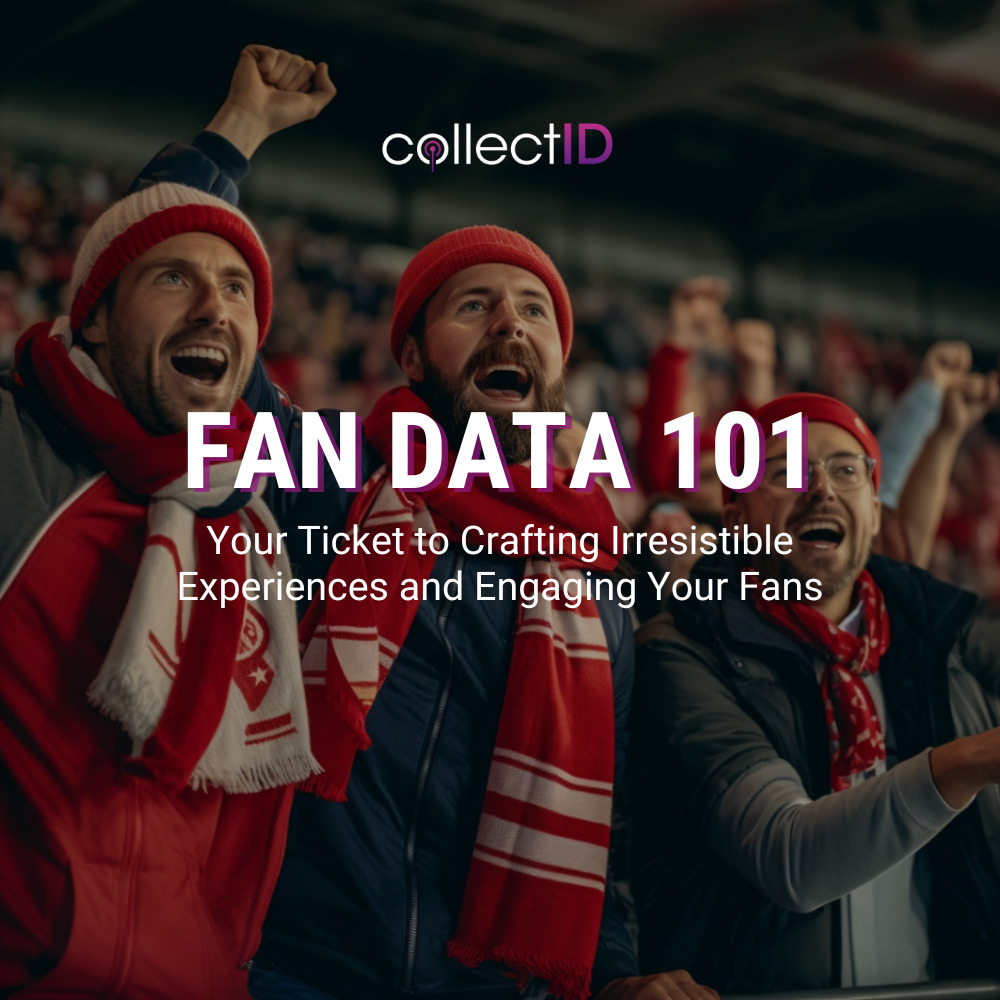In the sports industry, using fan data to craft engaging experiences is becoming an increasingly popular conversation. Having a deep understanding of your fan base’s unique wants, needs, and interests is an invaluable resource not to be overlooked. Whether it’s leveraging ticket sales insights or developing personalized communication strategies — diving into the depths of fan data can make all the difference.

This blog post will explain why using fan data wisely is essential for creating powerful connections with your audience. Read on as we discuss everything from gathering insights to measuring success metrics in Fan Data 101: Your Ticket to Crafting Irresistible Experiences and Engaging Your Fans.
Defining Fan Data and Its Relevance in the Sports Industry
In today’s sports industry, data is king. But what exactly is fan data and why is it so important? Fan data refers to any kind of information that allows teams, leagues, and even advertisers to better understand their audience. This can include data on ticket and merchandise purchases, social media activity, and even in-stadium purchases.
By collecting and analyzing fan data, sports organizations can gain insights into who their fans are, what they want, and how they interact with the team and the sport as a whole. With this information, they can make more informed decisions about everything from marketing campaigns to fan engagement initiatives. Fan data is a crucial tool for any sports organization looking to remain competitive, relevant, and connected to its audience.
What Kind of Data Should You Gather on Your Fans
Knowing who your fans are is essential for developing a successful strategy. But beyond just knowing who they are, understanding what kind of data to gather can take your insights to new heights. It’s not just about demographics like age, gender, and location. You should also think about their interests, behaviors, and social media habits. For example:
1. Merchandise Sales
What types of products do they tend to buy and from which channels?
2. Ticketing and Game Attendance Data
How many of your fans are season ticket holders vs spectators vs walk-in attendees? How frequently do they attend games and what are their seating preferences?
3. Digital Interactions and Social Media Engagement
Which channels and social media content do they interact with the most? What are the click-through rates, downloads, and engagement levels?
This data can help you create more personalized and targeted content, ultimately increasing engagement and driving conversions. Don’t just collect data for the sake of collecting data. Be intentional about what you gather and use it to your advantage. By doing so, you can meet your fans where they are and create a community that keeps coming back for more.
How to Collect and Analyze Fan Data

One of the most effective ways to get to know customers and fans is by collecting and analyzing data. In the world of fandom, data can come in many forms, including social media engagement, website traffic, app activity, and sales numbers. As technology continues to develop, new data collection tools will create even better insights.
The key is to gather this information consistently and track it over time to identify patterns and insights that can inform your marketing strategy. With the right tools and approach, you can use fan data to not only better understand your audience but also create more personalized experiences for them that lead to increased loyalty and long-term success.
Best Practices for Keeping Fan Data Secure
As more and more fans interact with businesses online, it’s crucial to implement best practices for protecting their data. From names and birth dates to email addresses and credit card information, fan data is a valuable asset that must be kept secure. By utilizing encryption protocols, firewalls, and using up-to-date security software, businesses can create a virtual fortification that will protect their fans’ sensitive information from harm.
In addition to implementing strong security measures, it is crucial for businesses to adhere to data protection regulations, such as the General Data Protection Regulation (GDPR). The GDPR, implemented by the European Union, sets strict guidelines for the collection, storage, and processing of personal data. It grants individuals greater control over their personal information and requires organizations to obtain clear consent for data collection, provide transparent privacy policies, and promptly respond to data breach incidents.
To comply with GDPR, businesses should adopt a privacy-by-design approach, embedding data protection measures into their systems and processes from the outset. This includes conducting regular data protection impact assessments and maintaining detailed records of data processing activities. It is also essential to inform fans about their rights regarding their personal data and provide mechanisms for them to exercise those rights, such as the right to access, rectify, and erase their data. By prioritizing GDPR compliance and incorporating privacy-centric practices into their operations, businesses can build trust with their fans and demonstrate their commitment to safeguarding their data.
Companies should also ensure that their employees are adequately trained in data security practices and only grant access to sensitive information on a need-to-know basis. By following these best practices, businesses can simultaneously protect their fans and their own reputation.
Examples of Companies Who Have Leveraged Fan Data Successfully
In the ever-evolving world of marketing, companies are constantly searching for new ways to connect with their fanbase. With the rise of social media, fan data has become a coveted commodity in the industry. The ability to analyze and leverage this information can make or break a brand’s success. That being said, there are several companies that have truly mastered the art of fan data.
Atlético Mineiro
One notable example of a company that has effectively leveraged fan data is Atlético Mineiro, a renowned football club in Brazil. The club introduced a groundbreaking innovation in the form of its smart jersey, which integrated cutting-edge technology to enhance the fan experience. The jersey was equipped with sensors that collected real-time data, such as heart rate, body temperature, and movement patterns, from the fans wearing them during matches.

This data provided valuable insights into fan engagement and emotional responses, allowing the club to tailor their marketing campaigns, merchandise offerings, and even game strategies to better resonate with their fans. Atlético Mineiro’s success in utilizing fan data exemplifies how this valuable resource can revolutionize the way sports teams connect with their supporters.
Texas Rangers
In 2020, the Major League Baseball (MLB) team opened a new stadium centered around data. In this updated setting, the operations department has the ability to observe outcomes almost instantly, and comprehensive reports are available within an hour after the game concludes.
These insights empower the operations team to identify the busiest stadium entrances at any given moment, enabling them to efficiently allocate staff, promotional materials, and concession resources. Various departments can access real-time information regarding the best-selling shirts (including sizes) at any point, the remaining stock of paper towels in each restroom, and even the rate of hot dog sales per minute.
NBA
The National Basketball Association (NBA) is a prime example of a sports organization that has successfully leveraged fan data to enhance the fan experience. Through the NBA App and website, the league collects extensive data from millions of fans, including preferences, viewing habits, and engagement levels. By analyzing this data, the NBA is able to provide personalized content recommendations, live game updates, and exclusive fan experiences.
The league also uses fan data to tailor marketing campaigns and target specific demographics, maximizing fan engagement and driving ticket sales. The NBA’s ability to tap into fan data has not only deepened the connection between the league and its fans but has also revolutionized the way fans interact with and consume basketball content, solidifying the NBA’s position as a global sports powerhouse.
Unlocking the Power of Fan Data: Enhance Engagement and Drive Success with collectID
As we can see, collecting and analyzing fan data is an effective way to engage with your fans and create unique experiences. With the right strategy, companies can leverage fan data to create a more dynamic, efficient, and good working environment. Furthermore, it’s important to ensure that collected fan data is stored securely to protect the privacy of your viewers. To exemplify this, several teams have used fan data successfully, like Atlético Mineiro’s smart jersey and the Texas Ranger’s data-centric stadium. Clubs like this show us how invaluable fan data can be when used correctly. Overall, managing and leveraging fan data correctly could potentially be a game changer for any sports team or company within the industry.
At collectID, we empower sports clubs to access greater insights into their fanbase. Get in touch with us today to learn more about how you can use smart products to enhance the fan experience and improve engagement.















